The Peafowl

The two dozen or so resident Mayfield peafowl make wonderful park greeters.
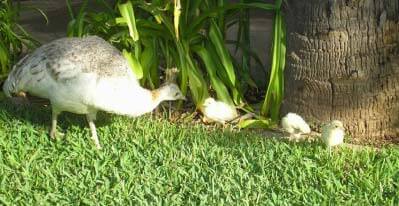

Facts about the peafowl at Mayfield Park and Preserve
- Winter – The long tail feathers grow out on the adult males.
- Late winter/Spring – The peacocks start fanning their tails to court the females. The ritual starts around February continuing through spring. Peahens will sit on their nest of eggs which appear in surprising places throughout the park and preserve.
- Late Spring/early summer – The peachicks hatch.
- Summer – The peacocks loose their long tail feathers (July/early August).
More Quick Facts About Peafowl
- Their crests act like sensors for mates.
- Whenever a male peacock fans his tail, he shakes it at a rate of 26 times a second, creating a pressure-wave that literally rattles the female’s head for attention.
- A family of peafowl is called a bevy.
In General
Peacocks are the males, peahens are the females and peachicks are the babies. The less common word for the birds is peafowl. Peacocks for both male and female peafowl are also common.
Mayfield has two main types of peafowl: India Blue and Black-Shoulder. The Black-Shoulder type is actually a mutation of the India Blue. The Black-Shoulder peahens are mostly white.
India Blue peacocks have a blue chest, neck, and head, with green and gold feathers that appear to change colors depending on lighting. Their shoulders are white and black striped.
Black-shoulder peacocks have a similar coloring to the India Blue but their shoulders are solid iridescent black. The white-colored peahens are the Black-Shoulder type.
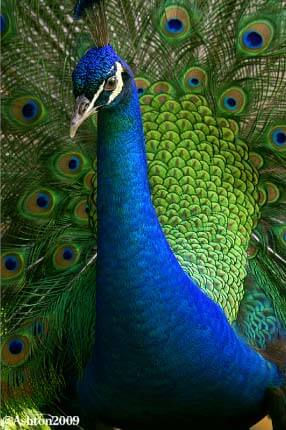
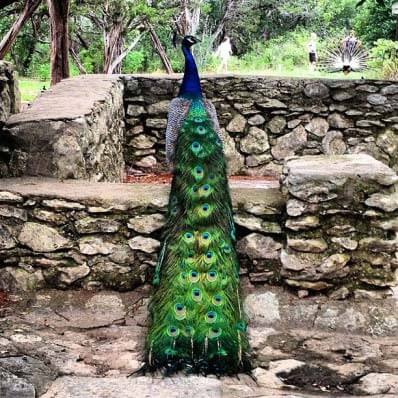
Mating season starts around February when the peacock tail feathers are grown out. The eggs appear 15-30 days after mating. Peachicks sometimes hatch as early as April or May and as late as August.
The peahens may lay 7 to 17 eggs throughout the mating season – one every other day at dusk and let out a loud “honk”, until she has laid all her eggs. After she has laid all her eggs she runs a fever and sits on the nest to incubate the eggs. Incubation takes 28 days.
Sometime between mid-July and the first part of August, the male’s tail feathers fall out and mating season is over. People flock to the park during this time to gather peacock feathers.
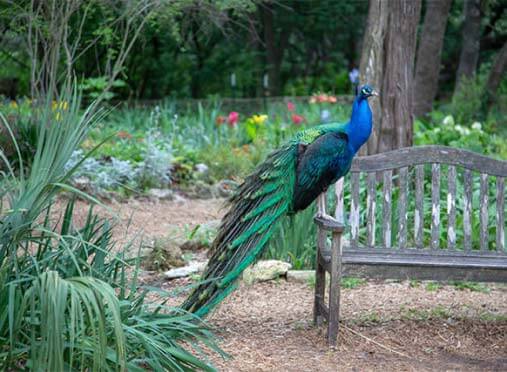
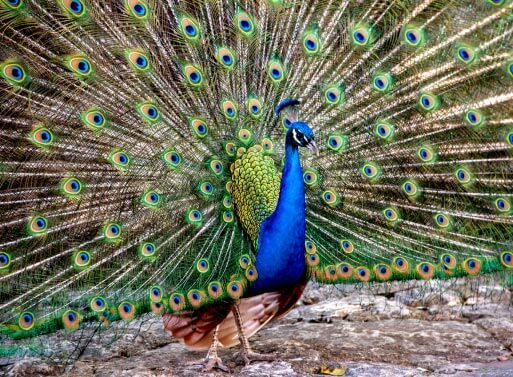
The average peacock’s train (tail feathers) contains more than 200 feathers. The eye of the fan feathers is believed to have magical powers by some.
The large cage at Mayfield Park and Preserve is sometimes used to segregate peafowl if needed.
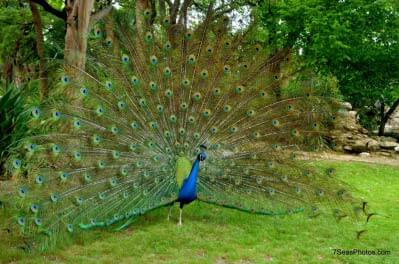
Committed volunteers feed the peafowl high-quality food every day in the late afternoon or evenings. The Mayfield Park caretakers also feed the peacocks. Although it may seem exciting for park visitors to feed the peacocks, it is discouraged.If you would like to find out more information attend one of the Mayfield Garden Tours.
When visiting Mayfield please show respect for the peafowl in their home and do not chase them.
